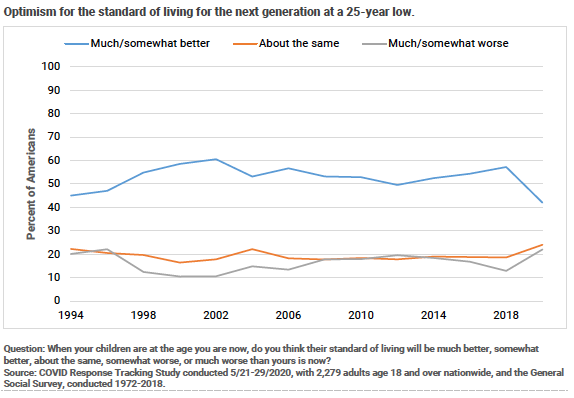As reported in a study by NORC (National Opinion Research Center) at the University of Chicago:
Optimism for the future generation has also fallen. In the wake of the outbreak, only 42% believe that when their children are their age their standard of living will be better than their own, whereas 57% said the same in 2018.
Historic Shift in Americans’ Happiness Amid Pandemic, June 2020

Perhaps, Americans are pessimistic about their children’s prospects, as many in the middle class had not recovered the wealth lost in The Great Financial Crisis of 2009 , according to a Pew Research Institute study we discussed in Middle Class Wealth Erosion Set to Continue. Additionally, given the disruption of “normal” as the pandemic continues and the nightly news reports of economic upheaval, many may have difficulty hoping for an improved situation, thus question their children’s prospects for financial prosperity.
Additionally, few parents have lived through such a systemwide educational disruption similar to what their children are living now. Thus, individuals aren’t sure the reliability of distance learning as an effective educational process where their children can learn as well as prepare for eventual employment. As we discussed in When life gives you lemons, make lemonade, parents believe their children are falling behind, in comparison if they’d had an in-person traditional classroom education this spring.
Acknowledging pessimism about the next generations’ financial prospects, parents and students can recognize what opportunities are missing from their education, yet are needed to more likely create economic prosperity. Then, in the age of digitalized, internet-delivered learning, families can search for resources to custom-design their student’s education, filling any perceived gaps in learning as well as gaining confidence they’re doing everything possible to safeguard their children’s future despite COVID.



